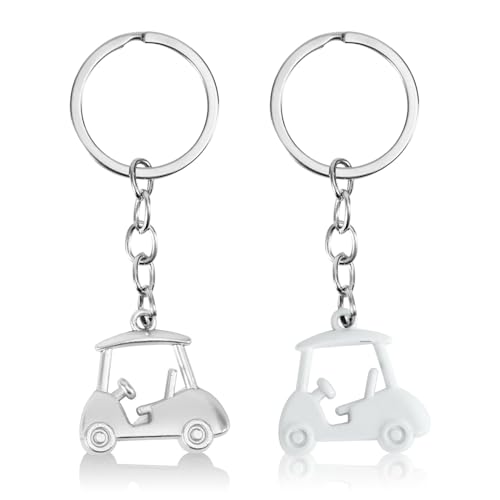Are you tired of constantly hitting the ball fat while playing golf? Hitting the ball fat can be frustrating and can affect your overall performance. In this article, we will discuss the common causes of fat shots and provide you with expert tips and advice on how to prevent them.
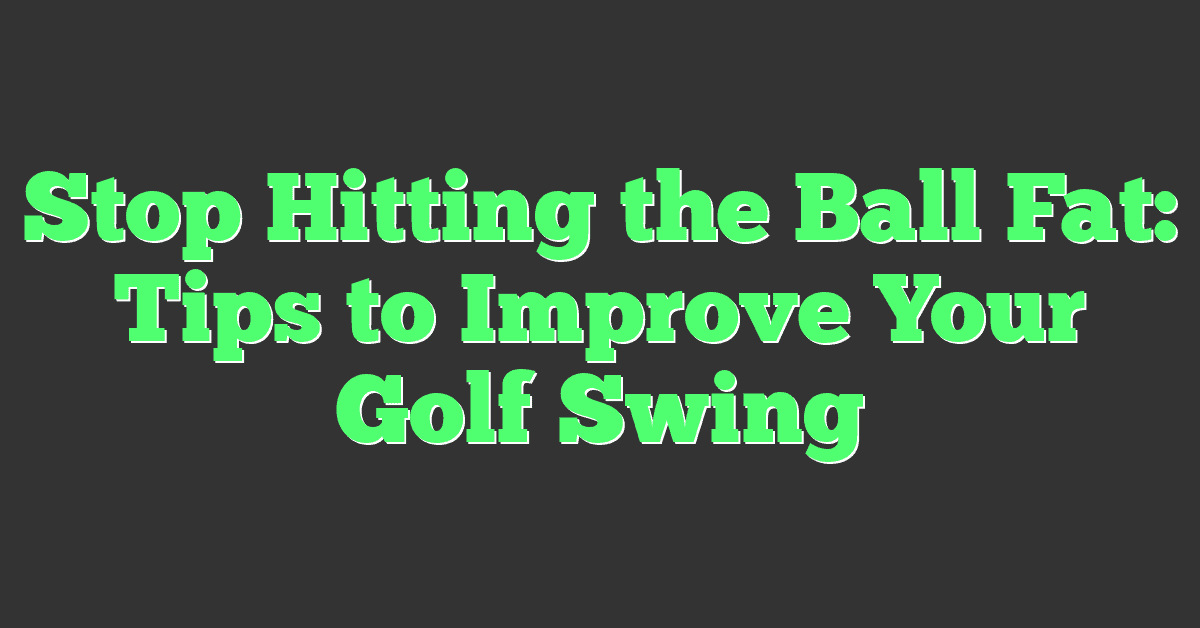
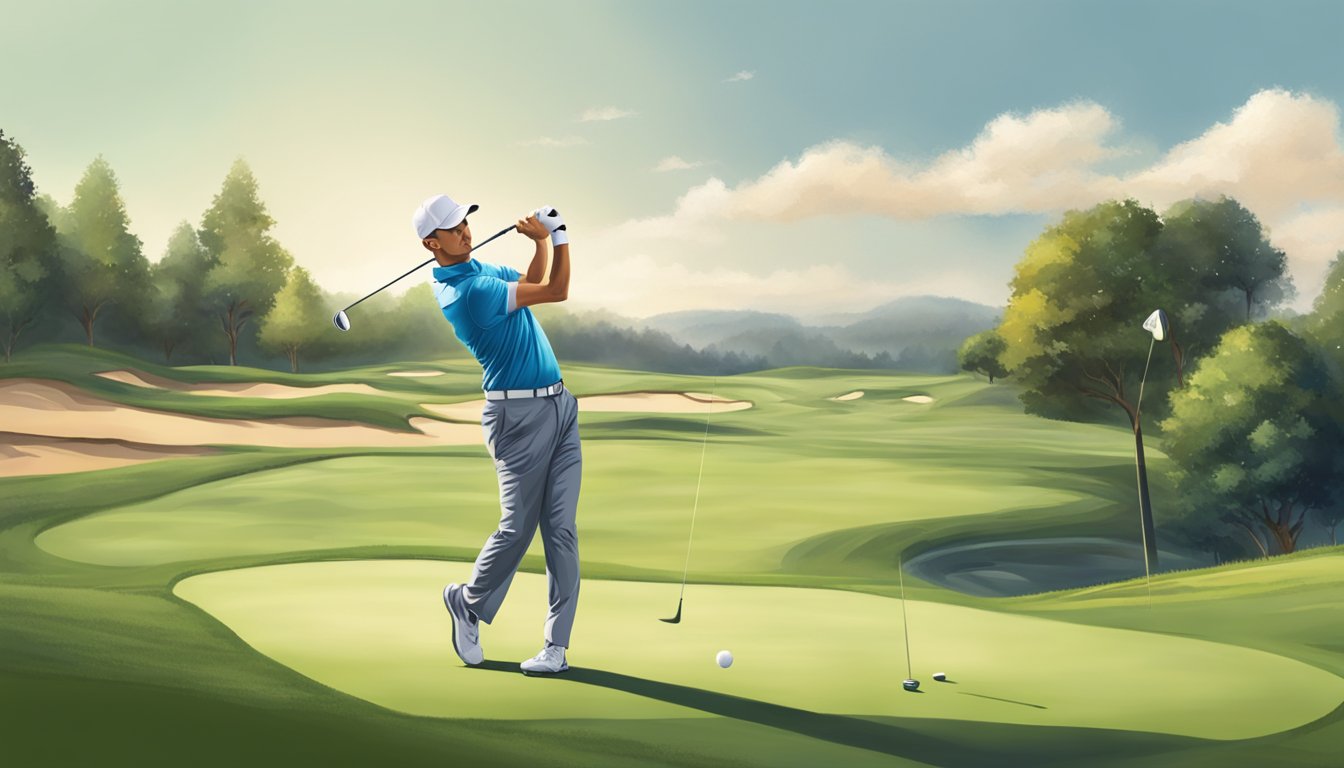
Understanding fat shots is the first step in preventing them. A fat shot occurs when you hit the ground behind the ball, causing the ball to travel a shorter distance than intended. This can happen for a variety of reasons, including incorrect setup, poor swing mechanics, or using the wrong equipment. By understanding the causes of fat shots, you can make the necessary adjustments to your game to prevent them from happening in the future.
Common causes of fat shots include incorrect ball position, poor weight distribution, and overactive hands. By making adjustments to your setup and swing mechanics, you can minimize the risk of hitting the ball fat. Additionally, using equipment that is designed to minimize fat shots can also be helpful. Keep reading to learn more about preventing fat shots and improving your overall golf game.
Key Takeaways
- Understanding the causes of fat shots is the first step in preventing them.
- Adjusting your setup and swing mechanics can minimize the risk of hitting the ball fat.
- Using equipment designed to minimize fat shots can also be helpful.
Understanding Fat Shots
https://www.youtube.com/watch?v=QD0MUjQWIps&embed=true
Hitting a fat shot is one of the most frustrating things that can happen in golf. It can ruin your round and make you feel like you don’t know what you’re doing. But don’t worry, it happens to everyone at some point. Understanding what causes fat shots can help you fix the problem and start hitting better shots.
A fat shot is when the club makes contact with the ground before it hits the ball. This can happen for a number of reasons, including:
- Poor ball position: If the ball is too far back in your stance, you may hit the ground before the ball.
- Swing path: If your swing path is too steep, you may hit the ground before the ball.
- Early release: If you release the club too early, you may hit the ground before the ball.
- Lack of weight transfer: If you don’t transfer your weight properly during your swing, you may hit the ground before the ball.
When you hit a fat shot, you’ll notice that the divot you take will be deeper and wider than it should be. You may also feel a jarring sensation in your hands and arms as the club hits the ground.
To fix fat shots, you’ll need to work on your golf swing. Start by checking your ball position and making sure it’s in the right place. You should also work on your swing path and try to make it more shallow. This will help you hit the ball before you hit the ground.
Another thing you can do is work on your weight transfer. Make sure you’re shifting your weight properly during your swing, and that you’re not hanging back on your right foot (for right-handed golfers) during your downswing.
Finally, try to avoid releasing the club too early. This can cause you to hit the ground before the ball. Instead, try to hold onto the club a little longer and release it at impact.
By working on these things, you can start hitting better golf shots and avoid those frustrating fat shots.
Common Causes of Fat Shots
https://www.youtube.com/watch?v=mECMl176nQM&embed=true
Hitting the ball fat is a common problem that many golfers face, but it can be frustrating and can ruin your game. Fat shots occur when the club hits the ground before making contact with the ball, causing the ball to travel only a short distance. Here are some common causes of fat shots and what you can do to fix them.
Poor Stance
Your stance is critical in determining the quality of your shot. If your stance is too narrow or too wide, it can cause you to hit the ball fat. A narrow stance can cause your weight to shift too much to one side, while a wide stance can cause you to lose your balance during the swing. Make sure your feet are shoulder-width apart and are parallel to the target line.
Improper Weight Transfer
Another common cause of fat shots is improper weight transfer. If you shift your weight too much to your back foot during the backswing, you will tend to lean your shoulders and body backward during the downswing, causing the club to bottom out behind the ball. To fix this, make sure you transfer your weight to your front foot during the downswing.
Swaying or Lateral Movement
Swaying or lateral movement during the swing can also cause you to hit the ball fat. If you move your body too much during the swing, it can cause the club to bottom out behind the ball. To fix this, keep your head still and maintain your spine angle throughout the swing.
Early Release
An early release occurs when you release the club too soon during the downswing, causing the club to bottom out behind the ball. To fix this, make sure you maintain your wrist hinge throughout the downswing and release the club only after you have made contact with the ball.
Swing Plane
Your swing plane is critical in determining the quality of your shot. If your swing plane is too steep or too shallow, it can cause you to hit the ball fat. To fix this, make sure you swing the club on the correct plane and maintain the same swing plane throughout the swing.
Impact Position
Your impact position is also critical in determining the quality of your shot. If your hands are too far behind the ball at impact, it can cause you to hit the ball fat. To fix this, make sure your hands are ahead of the ball at impact.

By addressing these common causes of fat shots, you can improve your swing and hit the ball more consistently.
Preventing Fat Shots
https://www.youtube.com/watch?v=kVtDvCB3IDo&embed=true
Fat shots can be frustrating and lead to poor scores on the golf course. Fortunately, there are several things you can do to prevent fat shots and improve your ball striking.
Proper Setup
One of the most common causes of fat shots is an improper setup. Make sure you are standing the correct distance from the ball. If you are standing too close, you may hit the ground before the ball. If you are standing too far away, you may hit the ball thin. Also, ensure your weight is distributed evenly between your feet and that your hips are not too far forward or too far back.
Ball Position
The position of the ball in your stance can also affect your ball striking. If the ball is too far forward, you may hit the ground before the ball. If the ball is too far back, you may hit the ball thin. For most iron shots, position the ball in the center of your stance. As the club gets longer, move the ball slightly forward in your stance.

Technique
Your swing technique can also contribute to fat shots. Make sure you are not decelerating through impact and that you are releasing the club properly. Also, avoid lifting the ball off the ground by swinging off your back foot or flipping your hands through impact. Instead, focus on a smooth, consistent swing and let the loft of the club do the work.
Lower Body
Your lower body plays an important role in preventing fat shots. Make sure you are shifting your weight forward during your downswing and that your hips are rotating properly. This will help you strike the ball first and avoid hitting the ground before the ball.
Consistency
Consistency is key to preventing fat shots. Make sure you are using the same setup, ball position, and swing technique for each shot. This will help you develop muscle memory and improve your ball striking over time.
By following these tips and practicing regularly at the range, you can prevent fat shots and improve your golf game.
Equipment to Minimize Fat Shots
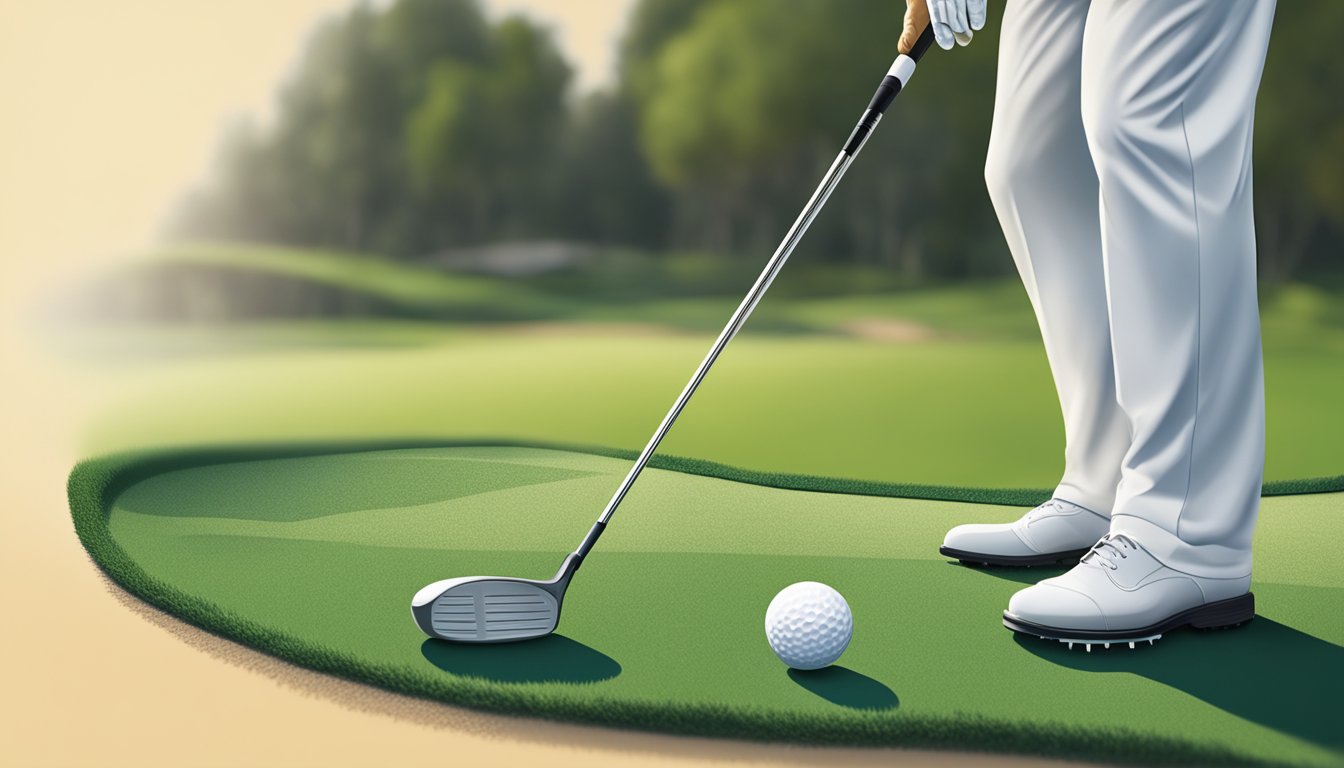

Having the right equipment is crucial to minimizing fat shots on the golf course. Here are some tips to help you choose the right equipment to help you avoid fat shots.
Choose the Right Irons
The type of irons you use can have a big impact on your game. For beginners or those who struggle with fat shots, it’s recommended to use irons with wider soles. This will help you get the ball in the air easier and reduce the likelihood of hitting the ground before the ball.
Consider a Hybrid Club
Hybrids are a great option for those who struggle with fat shots. They are designed with wider soles and a lower center of gravity, making it easier to get the ball in the air. They also have a larger sweet spot, which means you’ll have more forgiveness on off-center hits.
Use Graphite Shafts
Graphite shafts are lighter and more flexible than steel shafts, making them a great option for those who struggle with fat shots. They can help you get the ball in the air easier and reduce the likelihood of hitting the ground before the ball. They also absorb shock better, which can help reduce the strain on your wrists and elbows.
Choose Forgiving Equipment
Forgiving equipment is designed to help you hit better shots, even if you don’t hit the ball perfectly. It’s important to choose equipment that is forgiving, especially if you struggle with fat shots. This will help you get the ball in the air easier and reduce the likelihood of hitting the ground before the ball.
Consider a Driver with a Larger Head
A driver with a larger head can also help you avoid fat shots. This is because the larger head provides a larger sweet spot, which means you’ll have more forgiveness on off-center hits. It can also help you get the ball in the air easier, which can reduce the likelihood of hitting the ground before the ball.
By choosing the right equipment, you can minimize fat shots and improve your game on the golf course. Keep in mind that it’s important to choose equipment that is right for your skill level and playing style.
Expert Tips and Advice
https://www.youtube.com/watch?v=jLq-IuC_N38&embed=true
Are you tired of hitting the ball fat and losing strokes on the course? Here are some expert tips and advice to help you improve your technique and consistency.
First, consider your stance and ball position. According to GolfCircuit, standing too close to the ball can cause fat shots, so finding the right distance is crucial. Additionally, having the ball too far forward in your stance can also lead to fat shots. Try moving the ball back slightly and leaning your club shaft more forward at address, as suggested by Golfstead.

Next, work on your swing. Jack Nicklaus recommends avoiding sloppy head action and keeping your head in the same place throughout the swing, as mentioned in Golf Digest. Additionally, focusing on shifting your weight onto your front foot and getting to impact with the back of your left hand facing the target can help prevent fat shots, according to Golf Digest.
Another tip is to choose the right club for the shot. The Golfy recommends using mid irons or long irons for shots where you need to carry the ball farther and avoid hitting it fat. Finally, seeking professional guidance and lessons, including video analysis, can greatly help correct your swing and improve your consistency.
By following these expert tips and advice, you can reduce the number of fat shots in your game and improve your overall performance on the course.
Frequently Asked Questions
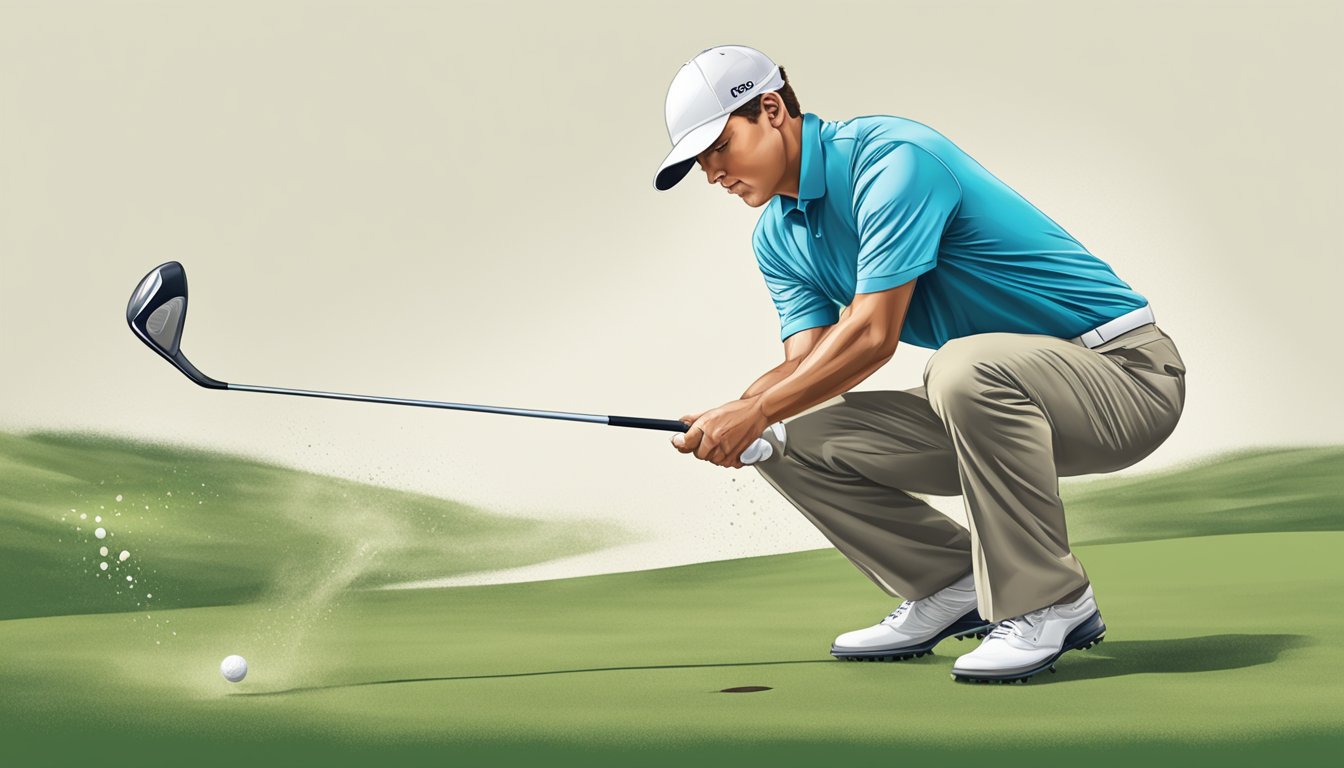
What are some effective drills to avoid hitting behind the ball?
Hitting behind the ball is a common problem for golfers. One effective drill to avoid this is to place a tee in the ground about an inch in front of your ball. The goal is to hit the ball without touching the tee. This drill helps you focus on hitting the ball first, which is essential to avoiding fat shots.

How can I improve my fat shots with fairway woods?
Fat shots with fairway woods are often caused by trying to lift the ball into the air. To avoid this, focus on hitting down on the ball and taking a divot after impact. One effective drill is to place a towel or small object just in front of the ball. Your goal is to hit the ball without moving the towel or object.
What are some tips for avoiding fat shots with wedges?
Fat shots with wedges are often caused by trying to help the ball into the air. To avoid this, focus on hitting down on the ball and taking a divot after impact. Another tip is to make sure your weight is forward and your hands are ahead of the ball at impact.
Why do I hit my driver fat and how can I fix it?
Hitting your driver fat is often caused by trying to lift the ball into the air. To avoid this, focus on hitting up on the ball and teeing it up higher. Another tip is to make sure your weight is forward and your hands are ahead of the ball at impact.
What causes thin shots and how can I avoid them?
Thin shots are often caused by hitting the ball with the club’s leading edge instead of the clubface. To avoid this, focus on hitting down on the ball and taking a divot after impact. Another tip is to make sure your weight is forward and your hands are ahead of the ball at impact.
How can I prevent hitting fat shots in wet conditions?
Hitting fat shots in wet conditions is often caused by the clubhead getting stuck in the ground. To avoid this, focus on hitting down on the ball and taking a divot after impact. Another tip is to use a steeper swing to avoid getting the clubhead stuck in the ground. Finally, make sure you have the proper equipment, such as golf shoes with good traction, to help you maintain your footing in wet conditions.







